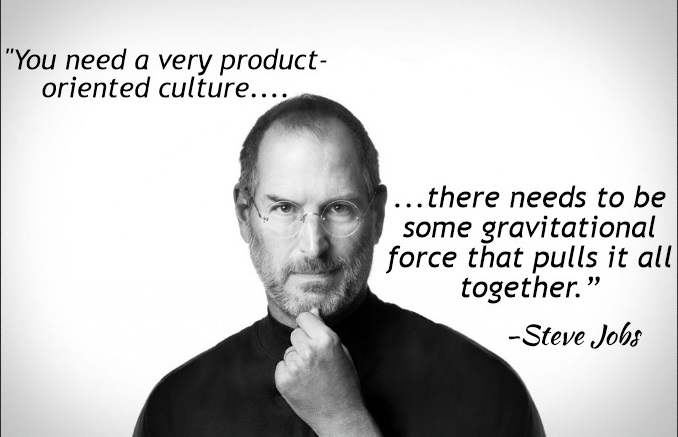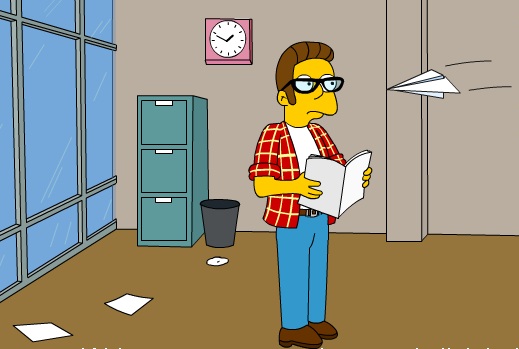Entrepreneurs spend their waking hours (as well as most of their sleeping hours) to get one thing right: the product development lifecycle. It is the one thing every business relies on so that the firm has a bevy of products and services they can sell to the customers.
How well a business executes the process of developing and launching a product often is an indicator of the future success of that business.
Why is the Product Development Cycle so Important
Here are some key statistics to think about when it comes to product development:
- New products have a failure rate of 25% to 45% (Pivot International).
- Harvard Business School puts the failure rate closer to 95%
- It takes an average of 28 weeks for a new product to reach 75% of its highest distribution. (Thomas)
- 42% of shutdown start-ups that launched a product didn’t solve a valid customer problem. (CBinsights)
- Only 55% of all product launches take place on schedule, according to the 2019 product manager survey (Gartner)
- For the 45% of product launches that are delayed, 20%, on average, fail to meet their internal targets. (Gartner)
- The biggest problem companies encountered when launching a new product is a lack of preparation (Harvard Business School).
Developing a product isn’t easy. It is also important to understand that just developing a product doesn’t ensure its success. This is why developing a product the right way can help increase the chances that your product will be launched on time and will be well received by your target market.
The Concept
What is the product development lifecycle and why is it integral for every startup and entrepreneur to master this aspect to achieve resounding success? The truth is every business needs to make new products and services available to the market and the consumer. In today’s world, everything has a finite shelf life, be it brand names, products, services, and so on. That’s just the way it has been because there will always be something better on the horizon that can make people excited about the new and out with the old.
People still can’t put a finger on why is it that a product or service goes out of style and out of the public imagination. Is it the features? Is it the general feeling of owning something ‘old’ and ‘outdated’? But the corporate world knows one thing: phasing out products and services is inevitable in a business. That means a firm has to constantly innovate and come up with something new as soon as their product goes on sale. The market is a relentless beast and your competitors are also working tirelessly to the bone for developing the next big thing.
As a startup, knowing the way of churning out new products and concepts and rolling out the right marketing plan for the right target demographic is of paramount importance.
In a nutshell, a product development lifecycle consists of a product going through universally tried and test development phrases. There’s the conception stage at first which is immediately followed by testing and validation stages that only serve to reinforce the fact that your product is workable or not. Once that’s done, a product prototyping stage occurs after which the product is tested and finally launched for the target market demographic.
A product development lifecycle has become an essential means for stemming the tide of product failures, something the corporate landscape has long struggled with. Its critical business importance can’t be discounted as new products and services happen to be the lifeblood of any business. For startups, the risk of failure is higher and hence the product development lifecycle has acquired so much importance amongst aspiring entrepreneurs. Getting the first suite of products and services for your new business is no laughing matter, after all.
The Nitty-Gritty of a Product Development Lifecycle Process
It’s a given that any business, no matter how old or new, needs to have new products out to become a sustainable entity in the hyper-competitive marketplace. This is why they keep the process of developing products as fool-proof and dependable as ever with a comprehensive product development lifecycle. Every phase has its set of guidelines that should be met so that a system of checks and balances is employed at every stage to make product development proceed.
It’s a way to stop hemorrhaging limited time, resources, and funds a startup has at its disposal when it’s starting. Products are constantly accessed by experts who can help access the functional, popular, and commercial viability of a product. The management is kept apprised of the product and they can make the right call on whether to keep the funds flowing or scrap the project because the price of failure is pretty much evident at the inception stage.
What Problem Are You Solving
One of the major reasons why businesses get started and thrive is because they solve a problem. During the first few stages of product development, you’ll have to ask yourself “what problem am I solving?” Most entrepreneurs have an idea that they think is great but the marketplace may think differently.
You may have an idea for an app that helps drivers fight traffic so that they can find a good parking spot when they go to a concert or sporting event. Great, but the real problem that they want to solve is finding a parking space at an event. So instead of starting an app business around traffic, you should be looking to find a way to create a “free parking space sharing” app.
We entrepreneurs tend to fall in love with our idea instead of the idea of solving a problem. Keep your pride out of the product development process and you’ll greatly increase your chances of success.
Stage 1: It All Starts With an Idea
Every product starts with an idea. There are numerous ideas and arguments and debates at this stage. Some design guys want to convey their ideas. Some engineering guys have some pretty zany miniaturizing ideas they’d like to incorporate in your product too.
It depends on the kind of product or service startups want to craft. It can be as much as an upgrade or an entirely new different kind of beast altogether. But one thing’s for sure, this is the phase when ideas fly around when you get a bunch of passionate people in one room. And it doesn’t stop there – the ideas are explored, expanded upon, and refined from the office to the bedroom and finally to the boardroom and then to the drawing board.
At this stage, the product people might want to look at the product feedback they have accumulated from the customers over a previous generation product. But for startups, access to such invaluable input might be missing. This is why they could learn from market research what consumers think about the competitor a startup is going head-to-head with. This market research could be anything from email marketing, telemarketing, or surveys. It’s a perfect way to gauge interest in a product or service before coming up with an idea that has no commercial applications.
Potential customers need to be listened to and for that, a set of right questions should be on hand which can aid in the idea stage of the product development lifecycle. This way, your product can be powered by the universal appeal that public opinion offers.
Stage 2: The Good Ideas Stay
When ideas are collected and assimilated, it is time to get to work about what is achievable and what isn’t. Great ideas can be pursued and put on the path of development. These ideas can be screened using some existing methods. They can be viewed against the existing strategy of the company. Does it meet your marketing goals? Does it gel well with the focus of the company? If yes, then that idea is worth exploring and developing.
Ideas that don’t necessarily jive with your company’s vision can end up costing the organization’s business focus, resulting in additional costs associated with acquiring new customers from a new target demographic. This can prove detrimental to the company in terms of scarce resources. For startups, this can result in greater risk in not taking off the ground. Any additional revenue you could bring could be easily negated if your focus shifts in terms of demographics and target market.
And then there’s always the danger of spending more than required on researching new products. This can again have a severe impact on the company’s profitability levels. So, it’s important to also use profitability expectations as a bulwark in the screening process.
Stage 3: Prototype the Concept
So now that the ideas and design of the product are pretty much set in stone, it is time to make use of all that research and put them to work into developing something tangible and workable. It’s time to build a working prototype. The prototype is going to serve as the fundamental on which you can mass-produce stuff for the market. Its utility is not limited to tech or hardware companies only. Even software that is at the prototype stage is the result of all the feedback, criticism, and ideas that have resulted from the previous two stages.
A prototype gives you the look and the feel and the function the product serves in your everyday life. It is more than what any amount of consumer surveys will tell you, that your product feels just right in the palm of your hands or is a joy to use. Who knows, the prototype might result in entirely new ideas being realized than those in the conception stage, and that too without any additional expenses or resources incurred. The prototype serves as an integral testing process too, identifying any issues which arise from continued usage of the product.
Stage 4: Let’s get it to the Manufacturing Stage Now
Now that the phone prototype is ready, workable, and fulfills all expectations and then some more, well congratulations. It’s time to mass-produce the device during the manufacturing stage of the product development lifecycle. Now it’s time to opt for a large-scale manufacturing solution that helps you keep costs low. After this, it’s time to think about distributing the products and services to the market.
The manufacturing stage throws up many challenges. Based on the industry you operate in, the manufacturing process defers according to the requirements of the product you’re making. Sometimes you need specific assembly line innovations. Sometimes it’s the issue of procuring enough raw materials for your product. For managers, the responsibility that rests with them is that the whole process should be as streamlined as possible. Reducing costs and time is a priority for a startup as well as an established firm.
There are guidelines firms can follow. They can be specific to your industry, i.e. a set of regulatory rules set down by a governing body. There are also safety guidelines to be cognizant of. Cutting corners in any of these cases can be detrimental in the long as well as short run. For a startup, there’s an added responsibility to be as responsible and credible as ever. It helps to have some industry goodwill on your side.
This is how a product goes from an idea into a living and breathing entity. A product development life cycle ensures that startups get their design and development processes just right and invest their limited sources fruitfully so that success is assured.
Stage 5 Commercialization
The moment is finally here. The commercialization phase is the stage where you launch the product you’ve worked so hard to develop. This stage includes testing the market, launch, and evaluation.
In testing the market, you will launch the product to a small sector of the market to evaluate the plan and make adjustments. During this phase, it is important to get feedback from customers and users. This feedback is invaluable and will help you succeed in a full-scale launch.
Conclusion
As I mentioned before, the majority of new product launches fail. Some of that has nothing to do with the product or business itself. But with the market becoming even more competitive, you want to increase your chance of success by developing a product the right way. Use this article as a template to follow when developing your next product and you may be enjoying the fruits of a successful launch.












Pingback: The One Question Every Founder Should Ask and 3 Ways to Find the Answer - StartUp Mindset
Pingback: How to Follow the 5 Stages of the Product Development Lifecycle – Entrepreneur – Start, Run and Grow Your Business